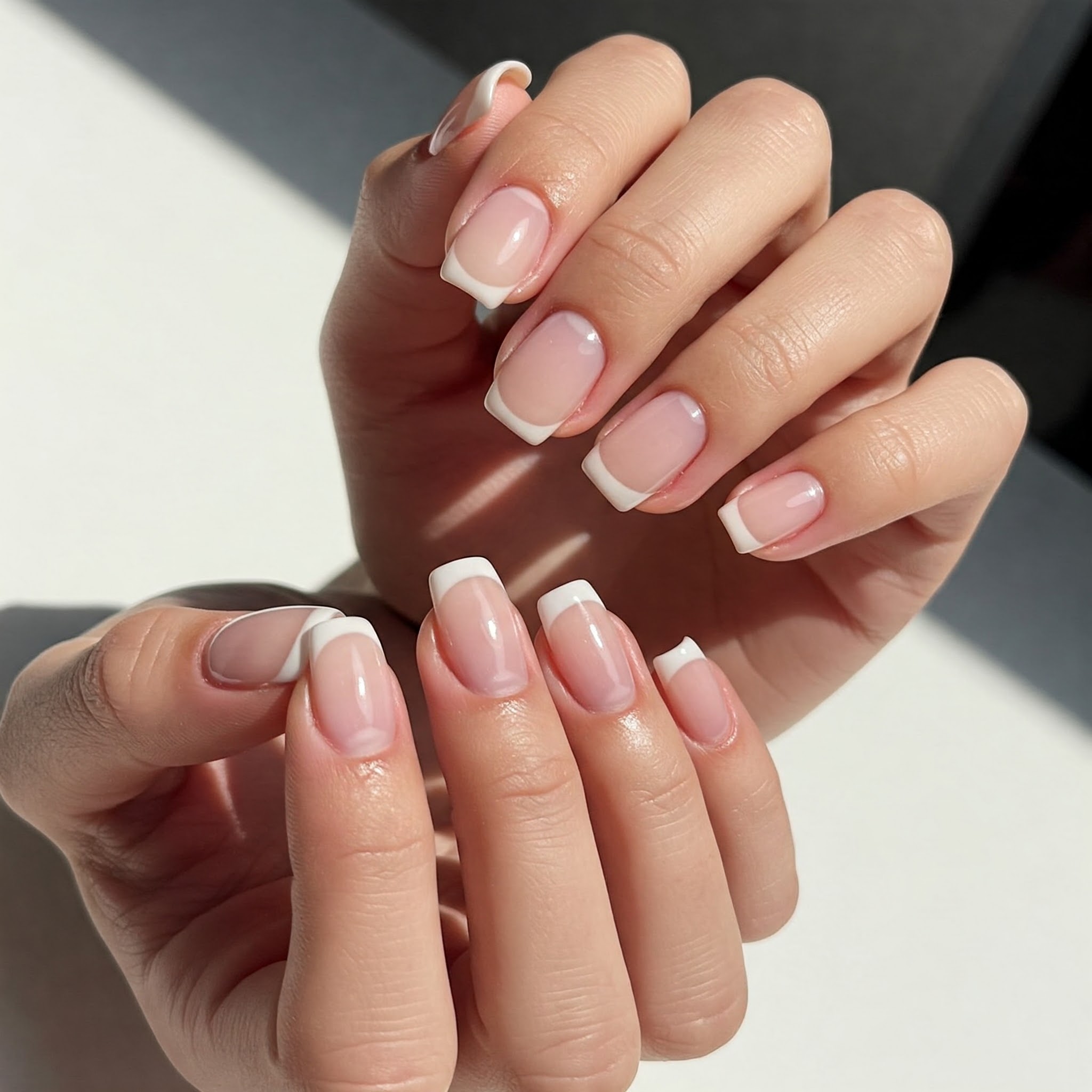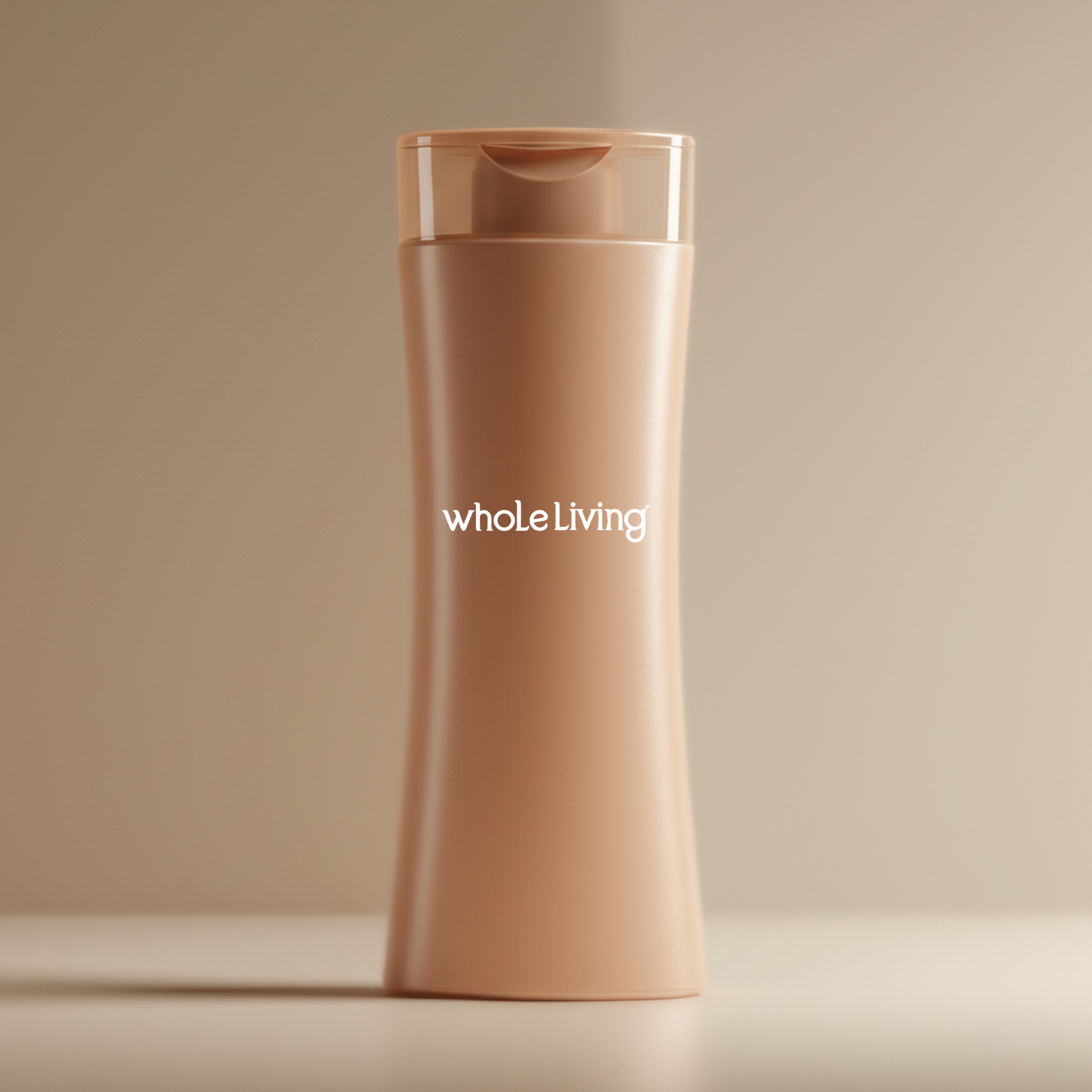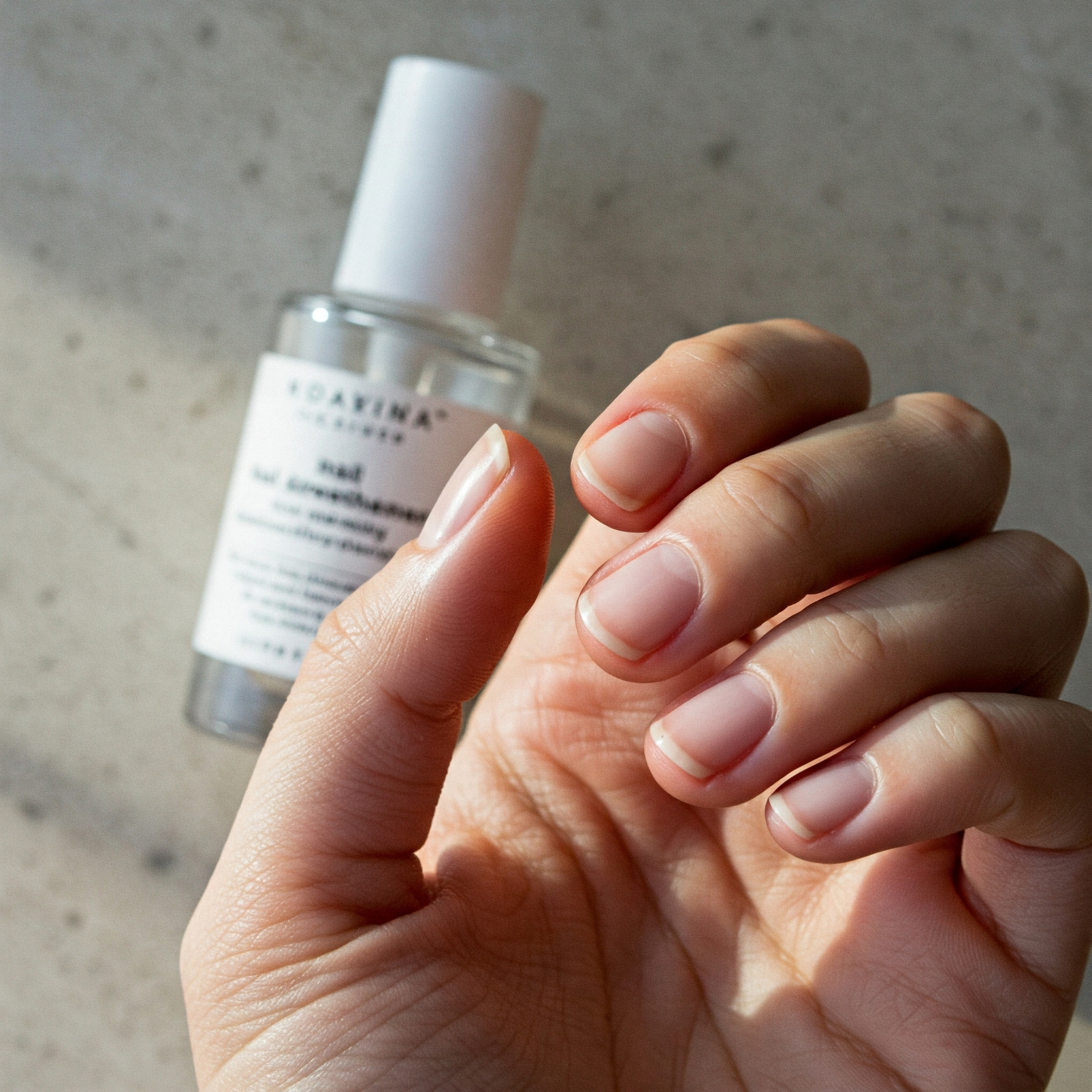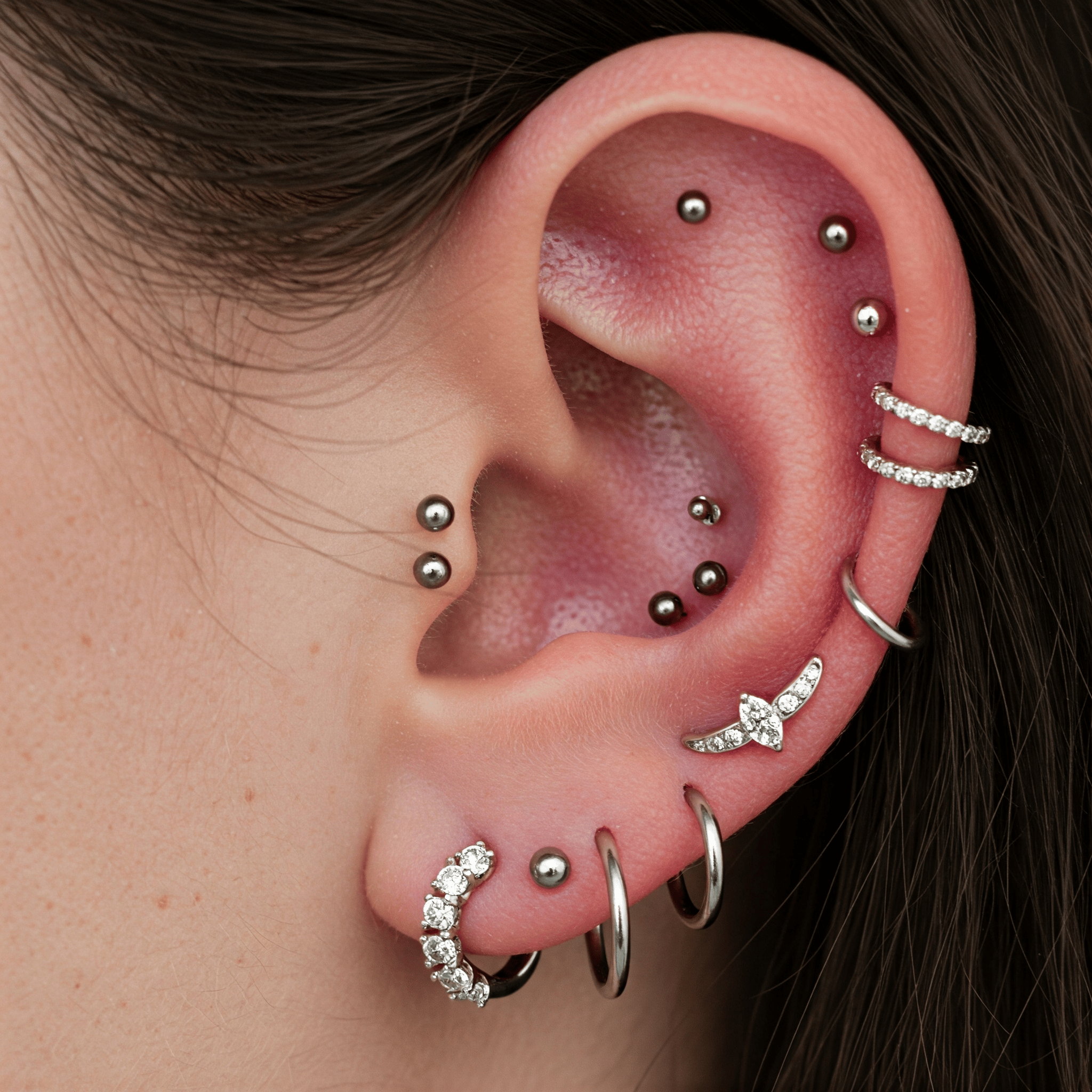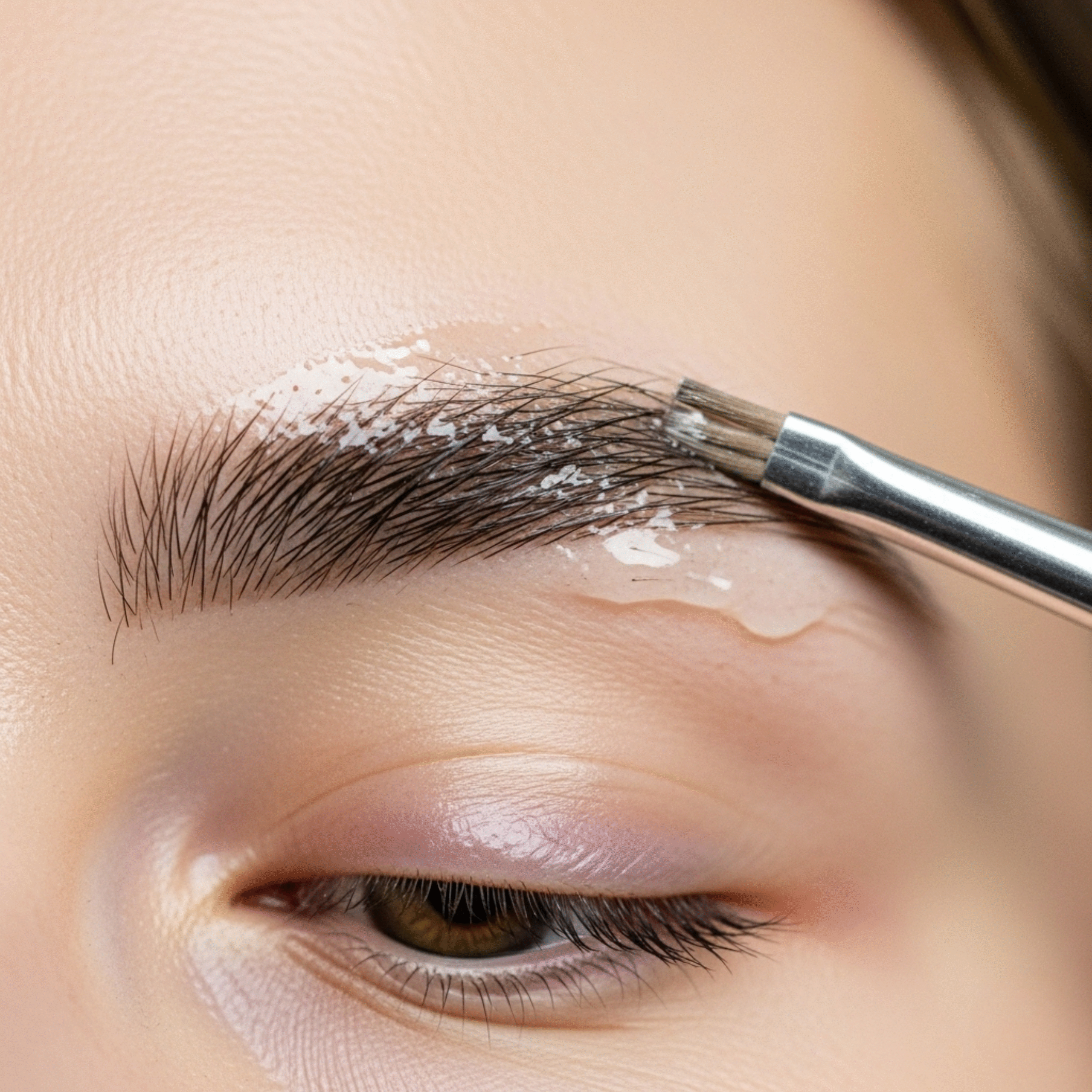In This Article
You don’t need a gym to feel strong. A good bicep muscle workout can happen anywhere — at home, on a walk, or even during a quiet moment between tasks. With just your body weight, a pair of dumbbells, or even a resistance band, you can build strength in your upper arm without the noise and crowds of a gym. This guide is your gentle nudge forward.
Your biceps brachii — the muscle running along the front of your upper arm — plays a big role in daily movements. Lifting groceries, opening jars, or hugging someone you love all depend on this powerful yet often overlooked biceps muscle. You don’t need fancy gear to care for it. You just need intention, a few mindful moves, and a willingness to grow, slowly and steadily.
When we train with awareness, we build more than strength. We build confidence. Every curl, every pause, every slow release is a message to your body that says, “I am here. I am listening.” These moments of connection, small as they may seem, add up over time. Whether you’re aiming for biceps growth or simply a little more strength to carry your day, you’re in the right place.
In this guide, I’ll walk you through bicep muscle workouts that are simple yet effective. We’ll cover biceps exercises that meet you where you are — whether you're new to movement or returning after a break. Together, we’ll focus on technique, not just speed or reps. Think of this as an invitation to reconnect with your strength, one biceps curl at a time. Let’s begin with curiosity, compassion, and a calm heart. You’re not here to punish your body — you’re here to honor it.
Why Biceps Matter More Than You Think

You use your biceps more than you realize. Every time you pick up a bag, bend your elbows to sip tea, or pull open a door, your upper arm muscles go to work. The biceps muscle, especially the biceps brachii, plays a vital role in your strength and posture. And training it does more than build definition — it helps you move better and feel more in control of your body.
Strong biceps support other muscle groups too. When trained with care, they assist your upper body in daily movements and workouts. A thoughtful biceps training plan can improve muscle activation in your arms and shoulders while supporting core stability. It’s not about bulking up. It’s about functional strength — the kind that helps you lift with ease, play with your kids, or carry your own luggage through the airport.
Bicep muscle workouts also work as a gateway to other fitness goals. They increase grip strength, improve your range of motion, and enhance overall muscle growth. By focusing on your biceps, you're also helping your shoulder joint and brachialis muscle grow stronger and more stable. So, let’s leave behind the idea that arm workouts are just for show. Your arms are part of your everyday story. Let’s give them the attention and love they deserve.
Start Here: Warming Up With Intention

Before we dive into curls and presses, I want you to start with care. A proper warm-up helps protect your muscles and prepare your body. This is where we awaken the upper arm, activate the biceps muscle, and ease the shoulder joint into motion. The goal here isn’t to break a sweat, but to switch your body from rest to readiness.
Begin by finding a quiet space and standing in a neutral position. Roll your shoulder blades back, then down. Take a deep breath. Let your body settle into alignment. Now, gently bend your elbows and raise your arms slowly — waking up the biceps brachii. Feel the ease. Feel the support. Here are five easy warm-up exercises to prepare your upper body for a bicep muscle workout:
- Arm Circles – 10 reps forward and backward to loosen the shoulder joint.
- Resistance Band Pull-Aparts – 10 slow pulls with a resistance band to warm up the biceps and upper back.
- Shoulder Rolls – 10 deep rolls backward to release tension around the shoulder blades.
- Light Hammer Curls (no weight or light dumbbells) – 8–10 reps with palms facing each other.
- Elbow Flexion Drills – 10 slow flex-and-extend motions to activate the biceps brachii and brachialis muscle.
These movements support full range of motion and encourage healthy muscle activation. They're gentle, effective, and take less than five minutes. You’re not just getting ready to move — you’re letting your body know that it’s safe, supported, and strong.
Every movement you do from here will be safer and more effective. Whether you’re doing drag curl, cable curls, or preacher curl variations, warming up keeps your muscle tissue healthy and your progress sustainable.
READ ALSO: Bulgarian Split Squat Exercise For Calm Strength Training
Classic Moves: Dumbbell Curls That Travel With You
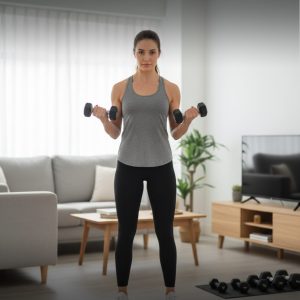
Ah, the classic dumbbell curl — simple, steady, and strong. This move is a cornerstone of bicep muscle workouts and fits into any lifestyle. You can do it in your living room, on your patio, or even while waiting for dinner to cook. With or without an adjustable bench, this movement always finds a way into the best biceps exercises.
When you do this right, you train the short head and long head of your biceps muscle evenly. That means more balanced biceps growth, better grip strength, and less strain on your shoulder joint. It's a full upper arm approach that also supports core stability when performed standing. Here’s how to perform the classic dumbbell curl with intention:
- Starting Position – Stand with feet shoulder width apart. Hold a dumbbell in each hand. Keep your palms facing forward.
- Lift – Slowly lift the weights by bending your elbows. Keep your upper arm still. Move only your forearms.
- Pause at the Top – Stop when the dumbbells reach shoulder height. Squeeze the biceps for one breath.
- Slowly Lower – Lower the weights back down with control. Don’t let them drop. Feel the constant tension.
- Repeat – Do 10–15 reps for 2–3 rounds, resting briefly between sets.
You can also do a seated dumbbell curl, especially if you're looking to reduce body sway. Want even more variety? Add in hammer curls or switch to a supinated grip for deeper muscle activation. A resistance band works great if you’re traveling light.
Whether you’re doing a standing barbell curl or exploring other bicep curl variations, this move builds the base. It’s not just about repetition — it’s about intention, form, and connection. Keep your core tight, your posture strong, and your attention present. That’s how strength is built.
Target and Tone: Preacher Curl Precision
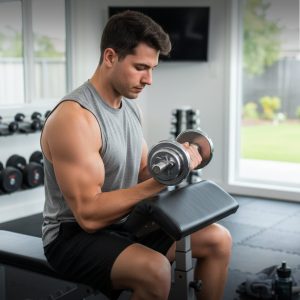
When you want to isolate the biceps, the preacher curl is your best friend. This movement targets the short head of the biceps muscle with laser-like precision. It helps you build strength with intention and reduces the urge to swing or cheat.
You don’t need a gym bench to make this work. A sturdy chair, a towel, and a focused mindset are enough. The key is to keep constant tension and avoid momentum. This helps with muscle activation and deepens your connection with the biceps brachii. Try these preacher curl variations to level up your bicep muscle workouts:
- Dumbbell Preacher Curl – Use a towel over a chair to support your arm. Perform slow, focused reps.
- Barbell Curl (Preacher Style) – Rest your arms on a sloped surface and curl using a barbell. Keep the movement smooth.
- EZ Bar Curl – This grip reduces wrist strain and hits both biceps heads evenly.
Each of these variations encourages grip strength and improves elbow flexion. You’ll feel your biceps working without involving the rest of your body too much. That’s the magic of preacher curls — they keep things honest.
When done right, these curls offer more than tone — they deliver shape, balance, and control. Add them regularly to your arm routines for focused biceps growth.
Flow Into Function: The Beauty of Hammer Curls
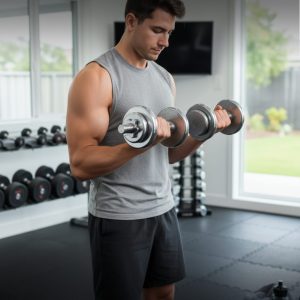
Hammer curls offer a natural, grounded approach to biceps training. With palms facing each other, you allow your body to move in a more functional way. This variation is gentle on the wrists, yet deeply effective for the biceps and forearms.
The movement works both the long head of the biceps and the brachialis muscle. It's a great way to add variety to your routine while enhancing strength across the upper arm. Even better, hammer curls need very little space. A couch or a backpack can become your home gym. Here’s how to add hammer curls into your bicep muscle workout flow:
- Starting Position – Stand or sit with a dumbbell in each hand, palms facing inward.
- Lift – Bend your elbows to raise the weights, keeping palms in a neutral position.
- Pause – At the top of the motion, pause and squeeze your biceps.
- Slowly Lower – Lower with control to feel the full range of motion.
- Repeat – Do 10–12 reps, for 2–3 sets depending on your level.
Hammer curls are especially useful in functional fitness. They help you carry things, hold grips, and support posture. They bring flow into your routine and remind you that strength isn’t always about tension — sometimes, it’s about ease.
Mix It Up: Bicep Curl Variations For Every Day
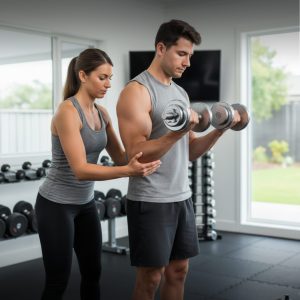
Sometimes your body craves variety — and your biceps do too. That’s where bicep curl variations come in. Mixing up your movements isn’t just fun, it’s a smart way to build strength in every part of the biceps muscle. It keeps your bicep muscle workouts fresh, your motivation high, and your progress steady.
When you add new angles and grips, you target both the short head and the long head of the biceps brachii. This approach not only supports balanced biceps growth but also keeps your muscle tissue challenged. Whether you’ve got five minutes or fifty, there’s always a move that fits your time and energy. Here are a few of my favorite bicep curl variations to try:
- Drag Curl – Keep the dumbbells close to your body and drag them up instead of curling outward.
- Seated Dumbbell Curl – Sit tall on a chair, plant your feet shoulder width apart, and curl with palms facing forward.
- Concentration Curl – Sit, lean forward, and rest one arm on your inner thigh. Curl slowly for deep isolation.
- Other Bicep Curl Variations – Try changing your grip width or using a supinated grip for fresh muscle activation.
Tracking your biceps training helps you see real progress. Write down your reps or record short videos to review your form. With consistency, you’ll notice more strength, shape, and confidence in your upper arm — all from these focused biceps exercises.
READ ALSO: Pulldown Exercise That Feels Gentle Yet Powerful
No Dumbbells? No Problem
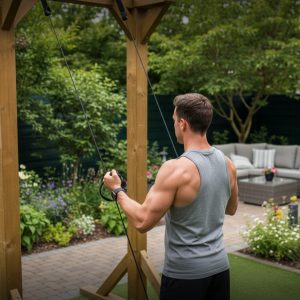
You don’t need dumbbells to train your biceps. With a little creativity, your home becomes a gym. Body weight, household items, and a resistance band can give you everything you need for a powerful bicep muscle workout.
This is perfect for days when you're traveling, resetting your routine, or simply craving simplicity. Training this way taps into different forms of control and balance, activating muscle groups in fresh ways. Try these no-equipment biceps exercises:
- Towel Curls – Use a rolled towel around your foot. Curl the towel with one arm at a time.
- Water Bottle Curls – Hold a filled bottle in each hand and perform slow dumbbell curl motions.
- Chin Ups – Use an overhand grip or underhand grip to lift your body. This is intense, but powerful for the entire upper arm.
- Drag Curl (Bodyweight-style) – Lean against a wall and mimic the drag curl movement using just tension and breath.
- Concentration Curl with Resistance Band – Anchor the band under your same side leg and curl with one arm slowly.
Adjust your stance for balance. Using the same side leg as your curling arm creates more core engagement. This type of training boosts functional strength and helps you build grip strength naturally. Wherever you are, your body is ready.
Combine and Conquer: Full Biceps Routine At Home
Now it’s time to bring everything together. A full bicep muscle workout doesn’t need to be long or complicated — it just needs to be consistent and balanced. This routine is designed to cover both biceps heads, challenge your grip, and support healthy elbow flexion. Here’s a sample home circuit you can repeat 2–3 times, resting 30–60 seconds between each set:
- Classic Dumbbell Curl – 12 reps with slow tempo
- Hammer Curls – 10 reps with palms facing each other
- Preacher Curl (Chair + Towel Setup) – 8 reps with control
- Cable Curls or Resistance Band Curls – 10–12 reps, full range of motion
- Standing Barbell Curl – 10 reps if you have equipment
- Drag Curl – 10 reps for biceps isolation
If you don’t have a barbell, try the regular barbell curl motion with resistance bands. The important part is the movement pattern, not the tool.
Remember, every biceps training session is a chance to connect with your strength. You’re not just lifting weight — you’re lifting your energy, your mindset, your spirit. Meet yourself with patience. You don’t have to be perfect — just present. And that is enough.
Train Smart: Form, Focus, and Feel

Every movement begins with intention. The best biceps exercises won’t work if your form is off. That’s why training smart is just as important as training hard. Start with a solid foundation — your starting position, your grip width, and your posture — and the rest will follow.
Begin with feet shoulder width apart and core tight. This gives you balance and keeps your spine safe. Choose your grip position mindfully. A supinated grip (palms facing up) works well for standard curls, while a shoulder width underhand grip can help engage both biceps heads.
The secret to true biceps growth lies in the tempo. Move slowly. Pause at the top. Slowly lower. Every part of the lift matters. This keeps constant tension on the biceps muscle and deepens muscle activation. It also supports better range of motion and protects your shoulder joint.
As you bend your elbows and lift, stay aware of how your upper arm feels. Small adjustments can make a big difference. You’re not just building muscle — you’re building awareness. And that’s what makes each bicep muscle workout more than exercise. It becomes a mindful practice of strength and self-respect.
Build a Habit, Not Just a Muscle
There’s something deeply powerful about showing up for yourself — not once, not occasionally, but consistently. When you commit to your bicep muscle workouts, you're doing more than strengthening your arms. You're building a routine that teaches discipline, patience, and care. These emotional and mental benefits ripple out into every part of your life.
Muscle activation is important, of course. Each slow curl, each stretch, and each controlled movement helps spark biceps growth. But growth doesn’t always mean size. Sometimes it means confidence, balance, and resilience. That’s what happens when you shift your focus from just getting stronger to feeling stronger — from just the visual to the internal.
Incorporating this into your weekly rhythm is a form of self-respect. You’re not just doing a set of biceps exercises. You’re choosing weight training as a path toward longevity. Strong arms help with everyday tasks, but they also support posture, upper body coordination, and core stability. They help you age with strength and move with more ease.
So each time you return to this practice, remind yourself: this is about more than shaping your upper arm. This is about shaping your relationship with yourself. One rep at a time, you’re growing in ways you can feel — and trust.
Rest and Recovery: Let the Muscle Grow
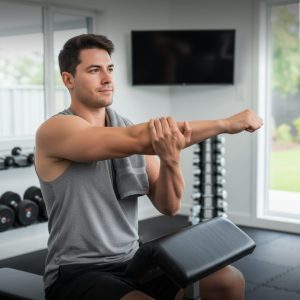
The moments of stillness matter just as much as the moments of movement. In fact, this is where muscle building happens. Rest isn’t a break from progress — it’s a key part of it. Your muscle group needs time to repair, replenish, and rebuild. Without that recovery, all the effort you’ve put into your bicep muscle workouts can go to waste.
Spacing out your training days helps avoid overuse of the elbow flexion and shoulder joint. It also reduces the chance of injury and keeps your form clean over time. Recovery doesn’t mean doing nothing. Light movement days — like walking, stretching, or mobility drills — support circulation and help with muscle tissue repair.
Sleep is your secret training partner. During deep rest, your body produces growth hormones that repair tiny muscle tears caused during exercise. Pair this with hydration, nourishing food, and mindful breathwork, and you give your body every chance to grow strong from the inside out. So let your recovery be intentional. It’s not about stopping — it’s about listening. Respect the cycle of effort and rest. This is how you build strength that stays.
Your Biceps, Your Journey
No two paths look the same — and your journey is entirely your own. What matters is that you keep showing up. Not perfectly. Just consistently. Strength isn't about being the best in the room. It's about returning to your mat, your weights, or your breath, even when it's hard.
Every biceps curl you do, every drag curl you slow down for, is a step forward. Whether you see quick biceps growth or feel it more subtly through increased grip strength or control, it all matters. Celebrate your strength — not just the physical kind, but the emotional and mental resilience that got you to this point.
Come back to this guide as often as you need. Let it remind you of your potential. Let it be your quiet support on the days you feel unsure. This isn't a program with an end. It's a practice — one that fits into your life, your rhythm, and your heart.
You already carry everything you need to build strength, peace, and presence. Your body is ready. Your mind is willing. And your heart, whether you know it or not, is leading the way.









